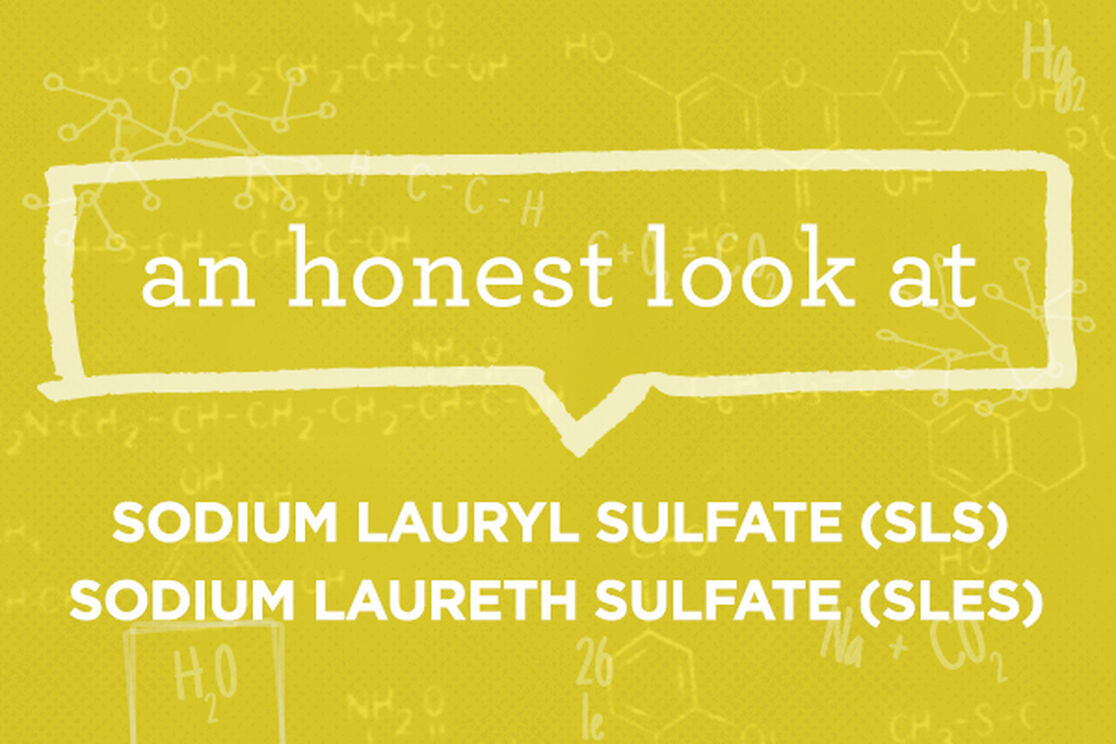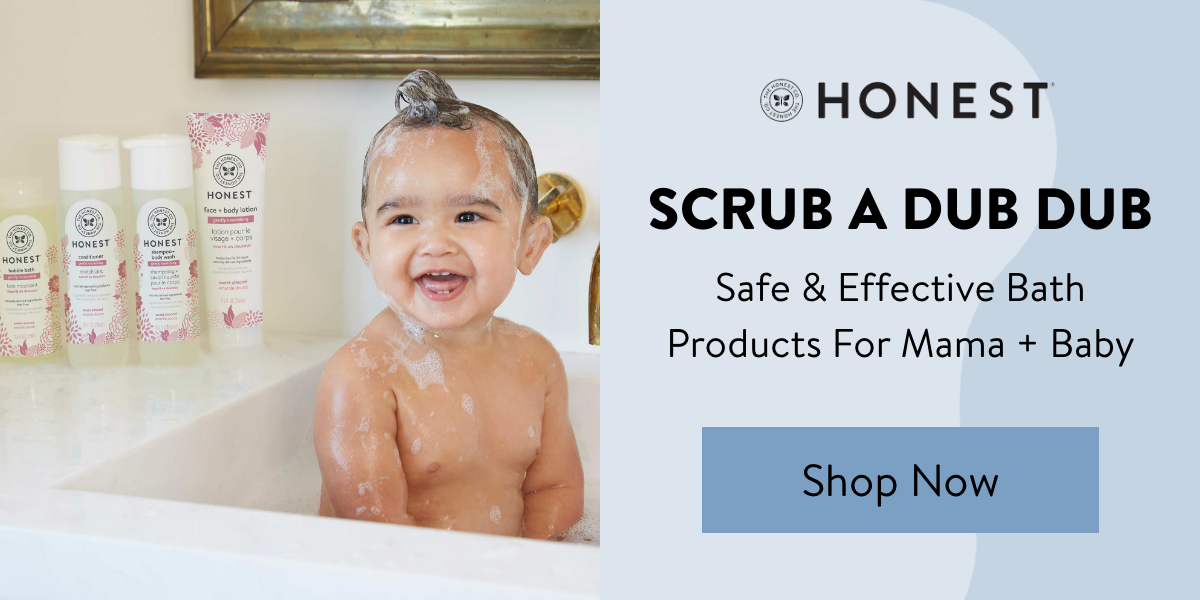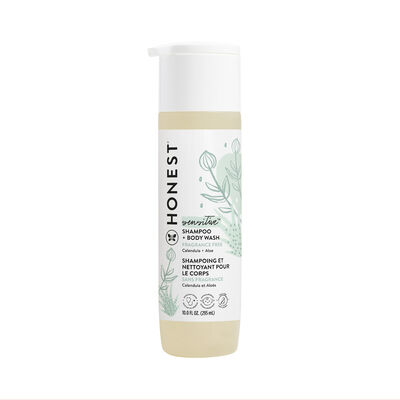This is part of our ongoing series helping consumers better understand chemicals, chemistry, and product formulations. We translate the science, bust the myths, and give you an honest assessment, so you can make informed choices for your family!
Ingredient:
These are actually two different, but closely related, chemicals: Sodium Lauryl Sulfate (SLS) and Sodium Laureth Sulfate (SLES).
What they are:
Sodium lauryl sulfate can be made from petroleum oil (via the OXO process) or from coconut or palm oil (via the Ziegler process). In both processes, fatty acids are extracted and converted to fatty alcohols, then sulfonated to become a crystalline salt. If SLS undergoes a chemical process called “ethoxylation,” it becomes SLES.
What they do:
Both of these chemicals are used in products primarily as emulsifiers (to help keep all ingredients properly mixed up) and surfactants (to help clean and create lather). They can be found in shampoos, toothpastes, mouthwashes, body washes, soaps, detergents, and more.
Why we’re featuring them today:
For many years, SLS was the star surfactant in skincare products, despite being a known irritant. This is so well-known, in fact, that it’s commonly used in lab testing to intentionally harm skin: Following application, scientists can compare the effects of untested products against SLS or test the efficacy of products intended to heal skin.
Widespread concern over the past few years compelled many companies to look for a gentler alternative. Putting SLS through the ethoxylation process led to the creation of SLES, a milder surfactant; it also often produces 1, 4-dioxane, a toxic contaminant and likely carcinogen. Though the U.S. Food and Drug Administration recommends that companies strip out this nasty chemical, it’s not a requirement. That’s likely why independent testing conducted by the EWG found this contaminant in 46% of products tested.
SLS and SLES are both included in our Honestly Free Guarantee which means we’ll never use them. We’ve switched over to sodium coco sulfate (SCS), which is a gentler alternative always derived from coconut.
Want your home to be Honestly Free of SLS & SLES?
It’s as simple as reading your ingredients labels. Avoid anything that lists the following: SLS, SLES, sodium lauryl sulfate, sodium dodecyl sulfate, sodium laureth sulfate, or sodium lauryl ether sulfate. (There are actually even more names for these two ingredients, but the ones above are most commonly used in the marketplace.)
Be aware: Many brands that claim to be “natural,” “green,” or “eco-friendly” still use these ingredients, so read carefully! If it’s a company you love, ask them to use a safer alternative. Together, we can make it better...
References:
- Campaign for Safe Cosmetics : Contaminants in Bath Products. (n.d.). Retrieved October 15, 2014, from http://safecosmetics.org/article.php?id=221
- Geier, J., Uter, W., Pirker, C., & Frosch, P. J. (2003, 12). Patch testing with the irritant sodium lauryl sulfate (SLS) is useful in interpreting weak reactions to contact allergens as allergic or irritant. Contact Dermatitis,48(2), 99-107. doi: 10.1034/j.1600-0536.2003.480209.x
- Loffler, H. et al. Pitfalls of irritant patch testing using different test chamber sizes. American Journal of Contact Dermatitis. March 2001, pages 28–32.
We aim to provide you with the most honest and credible information possible. This article was reviewed for accuracy by The Honest Team and its internal technical experts.
blog_review_statement





